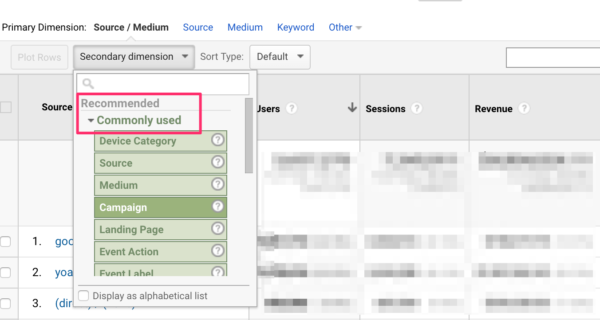Transform Your Data Recognizing With Secondary Dimensions
Checking out information with the lens of secondary dimensions opens up a realm of untapped insights, providing a much more nuanced perspective on the complexities of your dataset. By unwinding the layers underneath the surface metrics, you can reveal patterns and connections that may have or else gone undetected, paving the method for educated decision-making and tactical optimizations. This calculated utilization of additional measurements not only improves your information understanding yet also acts as a driver for opening the complete potential of your analytics undertakings.
Benefits of Secondary Measurements

Secondary measurements also make it possible for services to conduct more detailed performance examinations. By layering added measurements onto existing data, organizations can examine the influence of numerous factors on essential metrics, aiding them make more informed decisions. Second measurements facilitate the identification of new possibilities for optimization and growth by uncovering relationships that may have otherwise gone unnoticed. Overall, the utilization of secondary dimensions leads to more informative and durable information evaluation, encouraging businesses to drive tactical actions based on a deeper understanding of their information.

Exactly How to Apply Second Dimensions
To effectively carry out second dimensions in data analysis, services should first identify essential variables that line up with their logical objectives and purposes. This involves figuring out the particular metrics and dimensions that are most relevant to the insights they seek to acquire from the data. When these key variables are identified, businesses can then choose the proper secondary dimensions to improve their analysis additionally. It is important to take into consideration how these second dimensions will certainly give added context and deepness to the key information being examined.

Analyzing Information With Additional Measurements
Using additional dimensions in data analysis improves the deepness and context of understandings acquired from key data. By including secondary measurements into your evaluation, you can obtain a much more extensive understanding of the relationships and patterns within your data. This procedure entails taking a look at the main information via different lenses or perspectives, which can disclose surprise correlations or fads that might not be immediately noticeable when evaluating the information utilizing only main measurements.
Analyzing data with secondary dimensions enables you to sector and group your information in numerous methods, offering an extra nuanced view of your dataset. secondary dimensions. This segmentation can help you recognize specific variables that may be affecting the outcomes you are studying. By piercing down right into the information utilizing additional measurements, you can uncover beneficial insights that can assist decision-making and technique development
Ideal Practices for Second Dimensions
When including secondary dimensions into data evaluation, precision in specifying the dimensions is crucial for drawing out meaningful insights. It is important to choose second measurements that Full Report match the key data efficiently.
One more ideal practice is to prevent redundancy in measurements. Ensure that the additional measurements include new point of views or information to the evaluation, as opposed to duplicating info already existing in the key measurements. This will help prevent confusion and improve the interpretation of the information.
Furthermore, it is very important to take into consideration the scalability of the evaluation when picking secondary dimensions. Pick dimensions that can be easily expanded or readjusted as needed to suit future data needs or modifications in logical focus. By following these finest techniques, analysts can make best use of the worth of additional measurements in information evaluation and gain deeper understandings into their datasets.
Optimizing Insights With Second Dimensions
Including second measurements purposefully find more info boosts data analysis by supplying a deeper understanding of the partnerships within the dataset (secondary dimensions). By optimizing insights via second measurements, experts can uncover useful patterns, fads, and reliances that might not be quickly obvious when analyzing the data with main dimensions alone
One key advantage of utilizing additional measurements is the ability to segment and filter information extra exactly. This division enables for a more granular analysis of specific parts within the dataset, allowing experts to identify correlations and causations that may have or else been neglected.
Furthermore, second dimensions can help in contextualizing primary information points by adding layers of information that supply an even more thorough view of the data. This contextualization is crucial for making informed decisions based on an all natural understanding of the dataset.
Final Thought
To conclude, including second dimensions in data analysis processes supplies a more nuanced and comprehensive understanding of info, resulting in enhanced insights and strategic decision-making. By integrating additional variables that straighten with analytical objectives, concealed patterns and relationships can be disclosed, providing an extra thorough and contextualized sight of information. This strategy makes best use of the capacity for optimization and reveals brand-new possibilities within procedures.
In general, the application of additional dimensions leads to much more robust and informative data evaluation, equipping companies to drive tactical actions based Full Report on a deeper understanding of their information.
Making use of additional dimensions in data evaluation enhances the depth and context of understandings acquired from main information.Examining data with second dimensions allows you to section and team your information in different ways, offering a more nuanced view of your dataset.When incorporating second measurements into data evaluation, precision in defining the measurements is vital for drawing out meaningful understandings. Make certain that the additional dimensions include new perspectives or information to the evaluation, rather than replicating info already existing in the main dimensions.